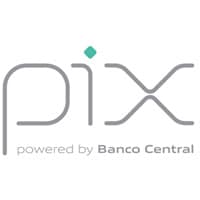Brazil’s central bank will turn on a national instant payments network in November that will allow consumers to make payments and transfers “in a few seconds, 24 hours a day, seven days a week, including between accounts of different institutions” using QR codes, NFC, their mobile phone number, email address or taxpayer ID.

“The goal is to build solutions that allow making an instant payment to be as easy, simple, intuitive and quick as making a payment with cash,” the Banco Central do Brasil (BCB) says.
“Payments and transfers initiated at the touch of a cell phone, for example, will be carried out intuitively, quickly and safely, any day of the year, with no time limit, and with the money immediately available to the recipient.”
“In addition to the speed and convenience of instant payments, society will be able to feel the benefits of increased competition in the retail payments market, with reduced costs and improved service quality,” the bank’s João Manoel Pinho de Mello says.
The Brazilian Instant Payment Scheme (PIX) also enables “innovation and the emergence of new business models, and promotes the electronification of payments, reducing operational risk and the difficulties related to the use of cash,” he adds.
To use PIX, “both the payer and the payee must have an account with a bank, a payment institution or a fintech,” the central bank explains. “Transactions can also be made using a payment or savings account.
“Settlement will be immediate. That is, the recipient will have the funds available in his account in a few seconds.”
Both static and dynamic QR codes will be supported with transfers taking place “directly from the paying user’s account to the receiving user’s account, without the need for intermediaries, which leads to lower transaction costs.”
Participation will be mandatory for all financial institutions and payment institutions that are licensed by the central bank and have more than 500,000 active customer accounts.
Settlement
PIX will use a single, centralised settlement infrastructure, which will be operated and managed by the central bank. Known as the Instant Payment System (SPI), it will support both direct participants, who will be able to settle transactions directly on the platform, and indirect participants, whose transactions will be settled through a direct participant.
“Commercial banks, multiple banks with a commercial portfolio, savings banks and clearinghouses and clearing and settlement services providers will necessarily be direct participants,” the bank says.
“Payment institutions that are not licensed by BCB will only be able to participate as indirect participants.”
Payees’ information, including proxy identifiers and related data, will be stored in a proxy identifier database (DICT) that will be operated exclusively by the BCB.
SPI direct participants will be able to access the database directly, while SPI indirect participants will have the choice of accessing DICT directly or indirectly.
Lower costs
“From the point of view of receiving users, it is expected that the decrease in the number of intermediaries in the payment chain will lead to a lower acceptance cost than other electronic means,” the bank says.
“In addition to the lower cost, the immediate availability of resources will optimise the cash flow management of receiving users, which will tend to reduce their need for credit.
“Another benefit is the ease of automating and reconciling payments. The aggregated information, which will accompany the payment order, will allow the development of technological solutions that integrate the systems of the receiving users.”
Next: Visit the NFCW Expo to find new suppliers and solutions